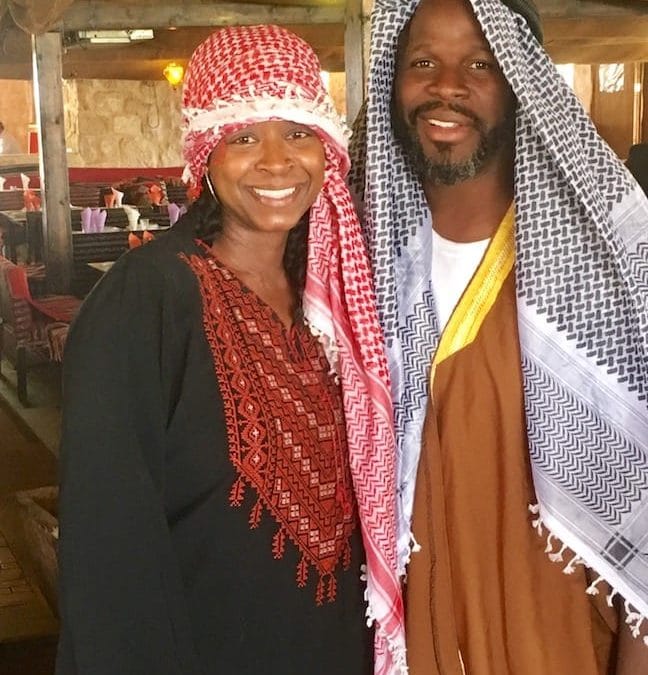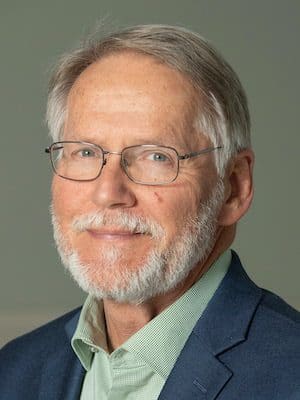Another day, another full quota of new experiences for the Campbell University Divinity School/Nurturing Faith Experiences group traveling in Israel, Palestine, and Jordan. We began this day (for those willing to get up an hour earlier) with a short tour of the dig at Ramat Rachel, an ancient suburb of Jerusalem that served as an administrative center during the eighth century BC and afterward. The remains are hardly more than a hundred yards from the hotel where we are staying. It, like the kibbutz that owns the hotel, is also named Ramat Rachel (the “hill of Rachel”), a name probably going back to the biblical story of how Jacob’s wife Rachel died while giving birth near Bethlehem.

The group looks down on a cemetery where thousands of Jews are buried in hopes that the Messiah will first set foot on the Mount of Olives.
The dozen or so folks who explored the dig with me then joined the rest of the crew for a relatively short drive to the top of the Mount of Olives, where we posed for a group picture before making our way down the Palm Sunday Road, pausing in the Jewish cemetery before stopping for a devotion led by John Wiggins at Dominus Flevvit, the traditional site of Jesus’ weeping over Jerusalem.
Further down into the Kidron Valley we came to the Garden of Gethsemane, which was more crowded than I had ever seen it – one result of Donald Trump’s upcoming visit to Jerusalem, which has thrown a major monkey wrench into everyone else’s plans — including the clearing out of three major hotels, whose guests were forced to find other accommodations, many as far away as Tel Aviv. On the one hand, having to squeeze through crowds around the garden and into the church was a major annoyance. On the other hand, being pushed or cut off by determined groups of Chinese and Nigerian pilgrims, along with visitors from many other lands, made wading through the throng to the “Church of All Nations” a memorable experience rather than a bad memory. Did that many people shout praise to Jesus on the original Palm Sunday?

Part of the tall concrete wall that separates much of Bethlehem from Israel. The graffito at the bottom says “The world is too small for walls.”
Traffic on the roads near pilgrim sites was as dense as the crowds, but Mike, our faithful driver, managed to get the bus to us and take us to Beit Sahour, one of three towns that make up Bethlehem proper. Bethlehem is in the West Bank, a part of Palestine, so we had to drive through a check point on the way in (easy) and on the way out (longer). Residents of Palestine, including Bethlehem, are not allowed to enter Israel without a special permit.

Candace and Orin Autry were recruited to dress as bedouins and dance to make lunch even more entertaining.
In Beit Sahour we enjoyed a fabulous lunch at “The Tent,” where Mike had arranged for us to have a traditional Palestinian dish called “makluba” (or maqlooba). Also known as “upside down chicken,” the dish consists of chicken, rice, various vegetables, and a special blend of spices. They are cooked together in layers in a large pot, then (with considerable fanfare) turned upside down on a platter. It was amazing.

Bishara Awad, giving directions as we delivered donations to the college and learned about its work.
After lunch, we visited Bethlehem Bible College, where we left donated materials from a “wish list” and founder Bishara Awad told us the inspiring story of how the college was started, and how many Palestinian ministers it has trained, along with graduate programs in peace-making and tour-guiding. He also helped us to understand the ongoing plight of Palestinians whose land was taken away to make room for the new Jewish state in 1948. It is a needed perspective.
Other than a bit of shopping, our last stop was at the Church of the Nativity, where it was so crowded that we opted not to stand in a two-hour line to see the marble, velvet, and silver-covered traditional site of Jesus’ birth – which has no real historical grounding, but is one of the first churches built by Roman emperor Constantine. We were able to see the interior of the basilica, which has been under reconstruction for years and is largely covered by scaffolding and tarps, as well as St. Catherine’s, where the pope traditionally leads a mass every Christmas Eve.
After dinner, we were treated to a lecture by archaeologist Norma Franklin of Haifa University, co-director of a current dig at Jezreel.
To top off the night, Shekanah Solomon led us in a devotion, reflecting on the significance of the events surrounding Jesus’ birth.
We continue to have a good experience, with the one downer being that several people have developed stomach issues. Fortunately, it tends to pass within a day or so, but we’ll be looking to buy more Imodium tomorrow …





